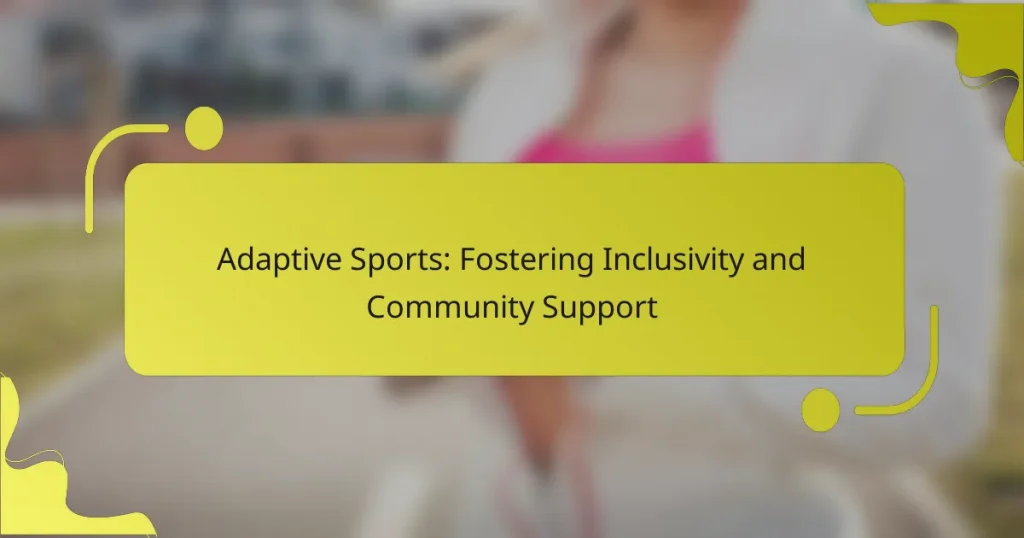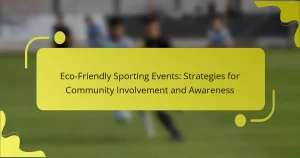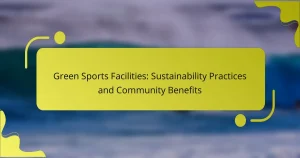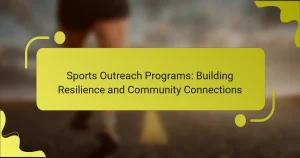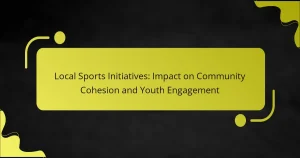Adaptive sports foster inclusivity by enabling individuals with disabilities to engage in community activities. They enhance social connections, boost self-esteem, and challenge societal stereotypes. Various regions adopt unique approaches to adaptive sports, focusing on competitive events or recreational inclusivity. Specialized equipment and community support play crucial roles in enhancing accessibility and promoting mental health benefits for participants.

How do adaptive sports promote inclusivity in communities?
Adaptive sports promote inclusivity by creating opportunities for individuals with disabilities to participate in community activities. These sports foster social connections, encourage teamwork, and enhance self-esteem among participants.
They also raise awareness about the capabilities of individuals with disabilities, challenging stereotypes and misconceptions. Community events centered around adaptive sports often draw diverse audiences, promoting engagement and support from all community members.
By facilitating access to sports and recreational activities, adaptive sports programs empower individuals and strengthen community bonds. This inclusivity leads to a more unified and supportive environment for everyone.
What are the key benefits of participating in adaptive sports?
Participating in adaptive sports offers numerous benefits, including improved physical health, enhanced mental well-being, and increased social connections. These activities foster inclusivity, allowing individuals with disabilities to engage in sports alongside their peers.
Adaptive sports improve physical fitness by promoting strength, flexibility, and endurance. Participants often experience significant gains in mobility and coordination. Mentally, these activities can reduce feelings of isolation and depression, providing a sense of accomplishment and purpose.
Socially, adaptive sports create supportive communities, encouraging teamwork and friendship among participants. This environment fosters a sense of belonging and empowerment, enhancing overall quality of life.
Additionally, engaging in adaptive sports can lead to increased awareness and advocacy for disability rights, promoting a more inclusive society.
Which organizations support adaptive sports initiatives?
Numerous organizations support adaptive sports initiatives, fostering inclusivity and community. Prominent entities include the Adaptive Sports Foundation, Disabled Sports USA, and the Challenged Athletes Foundation. These organizations provide resources, funding, and programs tailored to athletes with disabilities, enhancing access and participation in various sports. Additionally, local community centers and national governing bodies also contribute to these initiatives, ensuring a broader reach and impact.
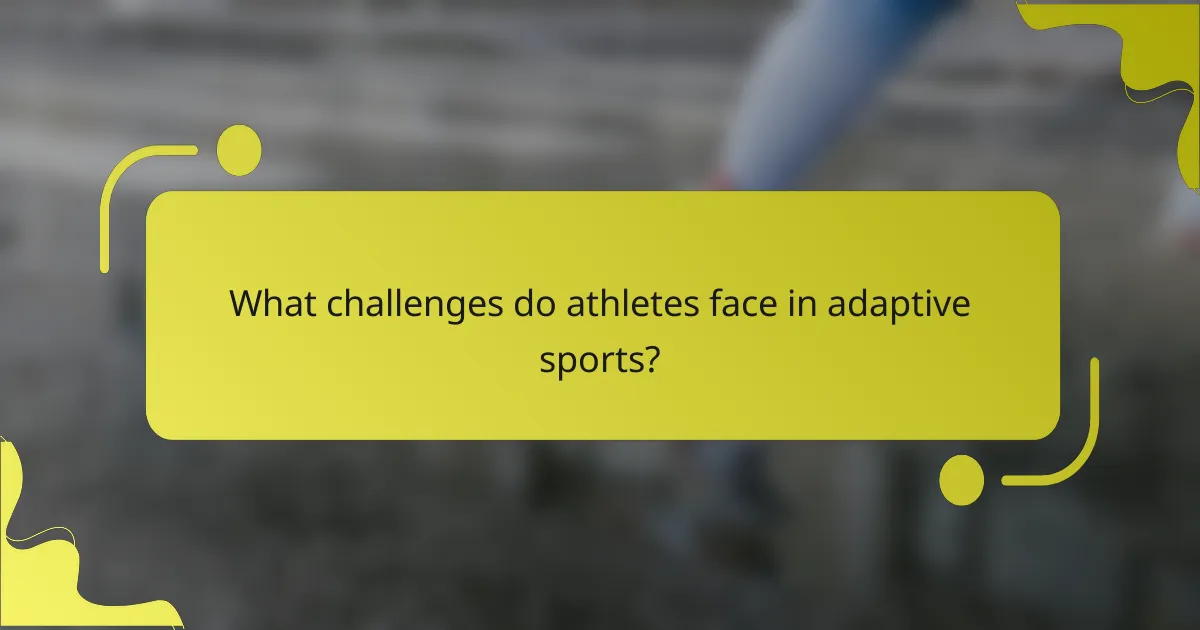
What challenges do athletes face in adaptive sports?
Athletes in adaptive sports face various challenges, including limited access to facilities, inadequate funding, and societal stigma. These obstacles can hinder participation and performance. Additionally, athletes may encounter insufficient coaching resources tailored to their unique needs. As a result, fostering inclusivity and community support is essential to overcome these barriers.
How can communities address accessibility issues in adaptive sports?
Communities can address accessibility issues in adaptive sports by implementing inclusive programs and improving facilities. Collaboration with local organizations enhances resources and awareness. Education on adaptive sports fosters understanding and participation. Financial support can reduce barriers for athletes. Engaging volunteers promotes inclusivity and community spirit.
What role does funding play in supporting adaptive sports programs?
Funding plays a critical role in supporting adaptive sports programs by providing necessary resources for equipment, facilities, and coaching. Adequate funding enables organizations to create inclusive environments that foster participation among individuals with disabilities. It also helps cover costs associated with training and events, ensuring that athletes have access to competitive opportunities. Additionally, funding can facilitate outreach efforts, raising awareness and encouraging community involvement. Programs with robust financial support can expand their reach and enhance the quality of their offerings, ultimately leading to greater inclusivity and community support.
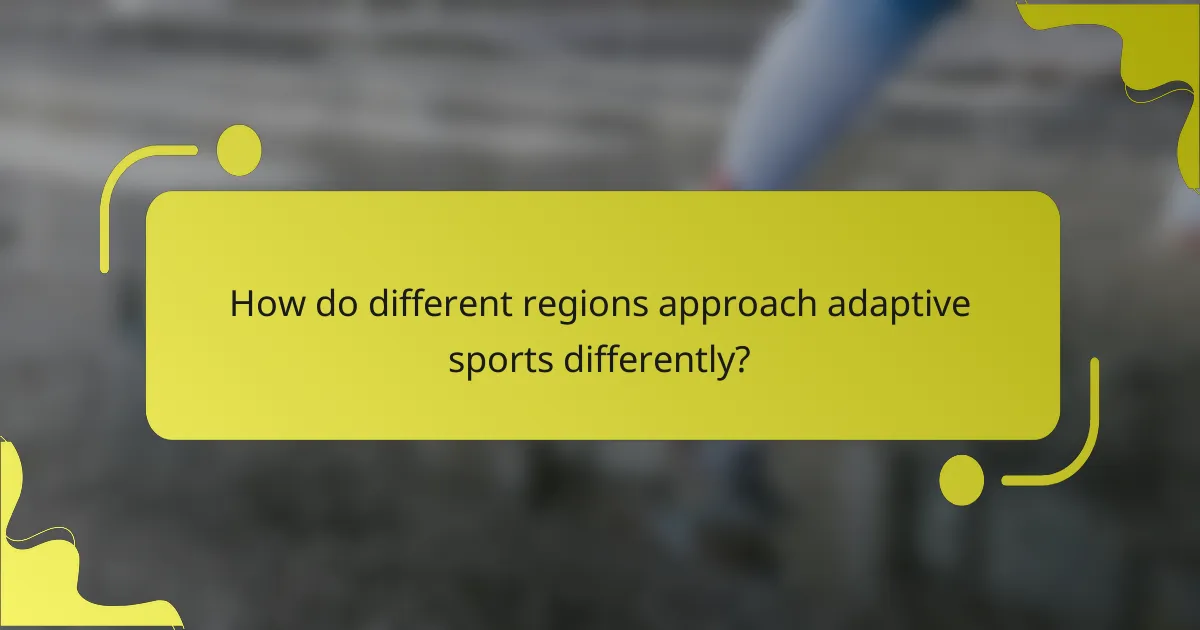
How do different regions approach adaptive sports differently?
Different regions approach adaptive sports by considering cultural, economic, and infrastructural factors. For example, North America emphasizes competitive events, while Europe focuses on recreational inclusivity. Asia often integrates adaptive sports into community programs, fostering local engagement. These diverse strategies enhance accessibility and community support, promoting a global culture of inclusivity.
What are the most popular adaptive sports in North America?
The most popular adaptive sports in North America include wheelchair basketball, adaptive rowing, and sled hockey. These sports promote inclusivity and community support, enabling individuals with disabilities to engage in competitive and recreational activities.
1. Wheelchair Basketball: This fast-paced sport has a robust following, with numerous leagues and tournaments across the continent.
2. Adaptive Rowing: This sport allows athletes with various disabilities to participate in rowing, fostering teamwork and physical fitness.
3. Sled Hockey: A variation of ice hockey, sled hockey is designed for athletes with lower body disabilities, offering excitement and competition.
These adaptive sports not only enhance physical health but also build strong community connections among participants.
Which adaptive sports are gaining traction in Europe?
Adaptive sports gaining traction in Europe include wheelchair basketball, para-athletics, and adaptive sailing. These sports enhance inclusivity and community support for individuals with disabilities.
Recent statistics show that participation in wheelchair basketball has increased by 15% over the past three years. Para-athletics continues to grow, with over 1,000 athletes competing in European championships. Adaptive sailing programs are expanding in coastal regions, providing opportunities for many to engage in water sports.
These sports not only improve physical health but also foster social connections and community engagement. Increased awareness and support from local organizations contribute to the growth of adaptive sports across Europe.
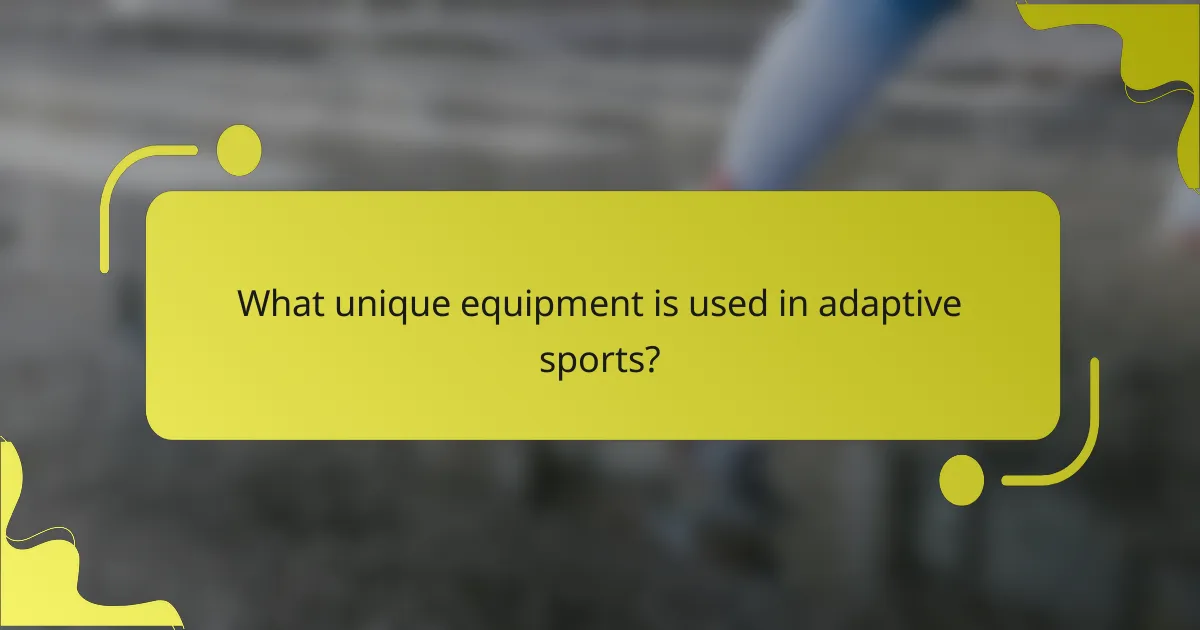
What unique equipment is used in adaptive sports?
Adaptive sports utilize specialized equipment designed to enhance performance and accessibility for athletes with disabilities. Examples include wheelchairs for basketball and racing, adaptive bikes, and sit-skis for skiing. These unique tools ensure inclusivity and foster community support, allowing athletes to participate fully in their chosen sports.
How does technology enhance performance in adaptive sports?
Technology significantly enhances performance in adaptive sports by providing specialized equipment and innovative training tools. Adaptive sports benefit from advancements in materials, design, and software that cater to athletes with disabilities. For instance, lightweight wheelchairs and prosthetics improve mobility and speed. Smart wearable devices track performance metrics, enabling personalized training regimens. Additionally, virtual reality systems create immersive environments for skill development and mental preparation. These technological innovations foster inclusivity and empower athletes, enhancing their competitive edge and overall experience.
What innovations are emerging in adaptive sports equipment?
Innovations in adaptive sports equipment focus on enhancing performance and accessibility. Recent developments include lightweight materials, smart technology integration, and customizable designs. For example, adaptive wheelchairs now feature advanced suspension systems for better maneuverability. Wearable tech, such as fitness trackers, provides real-time data to improve training. Additionally, modular equipment allows for adjustments based on individual needs, fostering greater inclusivity. These innovations significantly contribute to the empowerment of athletes with disabilities, promoting community support and engagement.
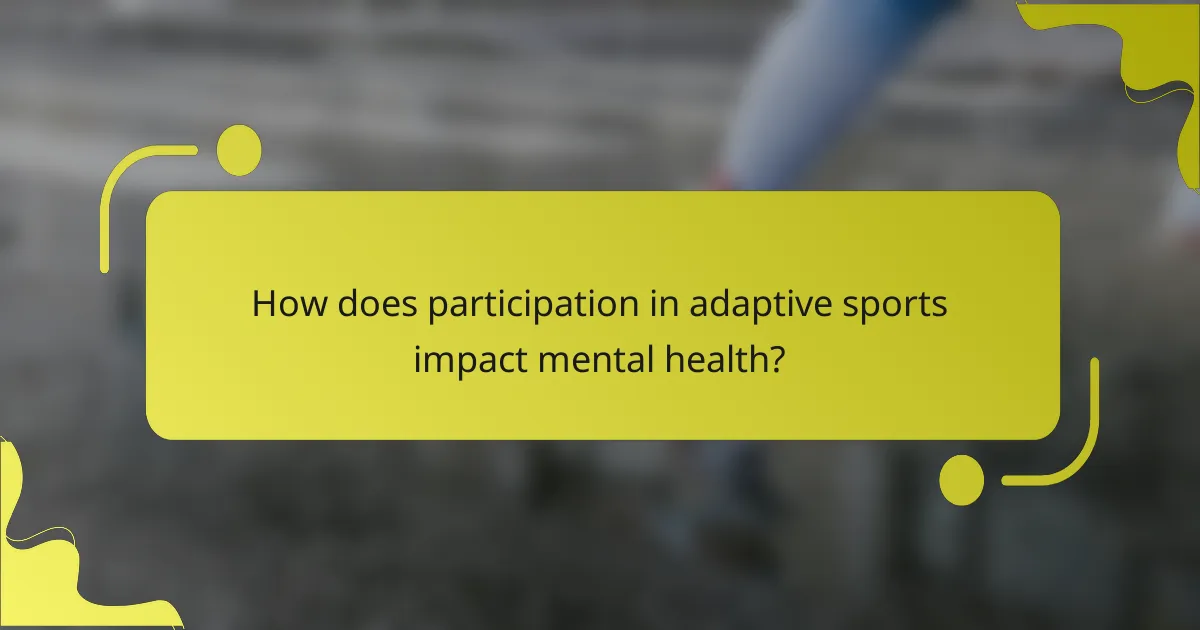
How does participation in adaptive sports impact mental health?
Participation in adaptive sports significantly enhances mental health by fostering community support and inclusivity. Engaging in these activities boosts self-esteem, reduces anxiety, and promotes social connections. Research indicates that individuals involved in adaptive sports report higher levels of emotional well-being and resilience. This participation often leads to a sense of belonging, which is crucial for mental health. The unique aspect of adaptive sports is their ability to create an inclusive environment where individuals with disabilities can thrive, ultimately improving their overall mental health outcomes.
What psychological benefits do athletes gain from adaptive sports?
Athletes gain significant psychological benefits from adaptive sports, including enhanced self-esteem, social connection, and stress relief. These sports foster a sense of belonging and community support, which is crucial for mental well-being. Participation can lead to improved mood and reduced feelings of isolation. Adaptive sports also encourage resilience and a positive mindset, empowering athletes to overcome challenges.
How can adaptive sports foster social connections among participants?
Adaptive sports foster social connections by creating inclusive environments where participants share experiences and support each other. These activities encourage teamwork, build friendships, and enhance community engagement. Participants often form bonds through shared challenges and achievements, leading to lasting relationships. Social events surrounding adaptive sports further strengthen these connections, creating a sense of belonging and support.
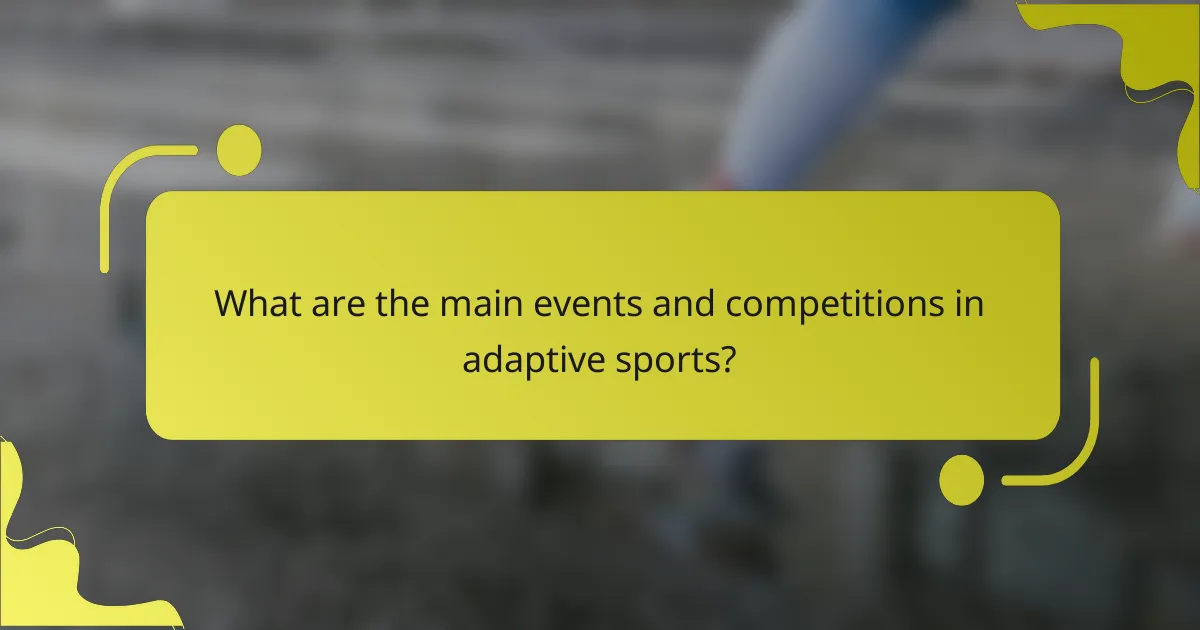
What are the main events and competitions in adaptive sports?
Adaptive sports feature numerous main events and competitions that promote inclusivity. Key competitions include the Paralympic Games, Invictus Games, and National Championships.
The Paralympic Games occur every four years, showcasing elite athletes with disabilities across various sports. The Invictus Games, initiated by Prince Harry, focus on wounded, injured, or sick servicemen and women, fostering recovery through competition. National Championships provide local platforms for athletes to compete, enhancing community support and visibility for adaptive sports.
These events not only highlight athletic prowess but also inspire broader societal acceptance and integration of individuals with disabilities.
How do major competitions like the Paralympics influence public perception?
Major competitions like the Paralympics significantly enhance public perception of adaptive sports. They showcase the athleticism and determination of athletes with disabilities, fostering inclusivity and community support. These events challenge stereotypes and promote awareness of the capabilities of individuals with disabilities. As a result, more people engage with adaptive sports, leading to increased participation and support for accessible programs. The visibility of these competitions also encourages broader societal acceptance and appreciation for diversity in sports.
Which local events can promote community engagement in adaptive sports?
Local events promoting community engagement in adaptive sports include inclusive competitions, workshops, and awareness campaigns. These events foster connections among participants, families, and supporters, enhancing community support and inclusivity. For example, adaptive sports festivals allow athletes to showcase their skills while encouraging spectators to engage. Additionally, collaboration with local organizations can amplify outreach efforts, ensuring diverse participation. These initiatives ultimately strengthen community bonds and promote understanding of adaptive sports.
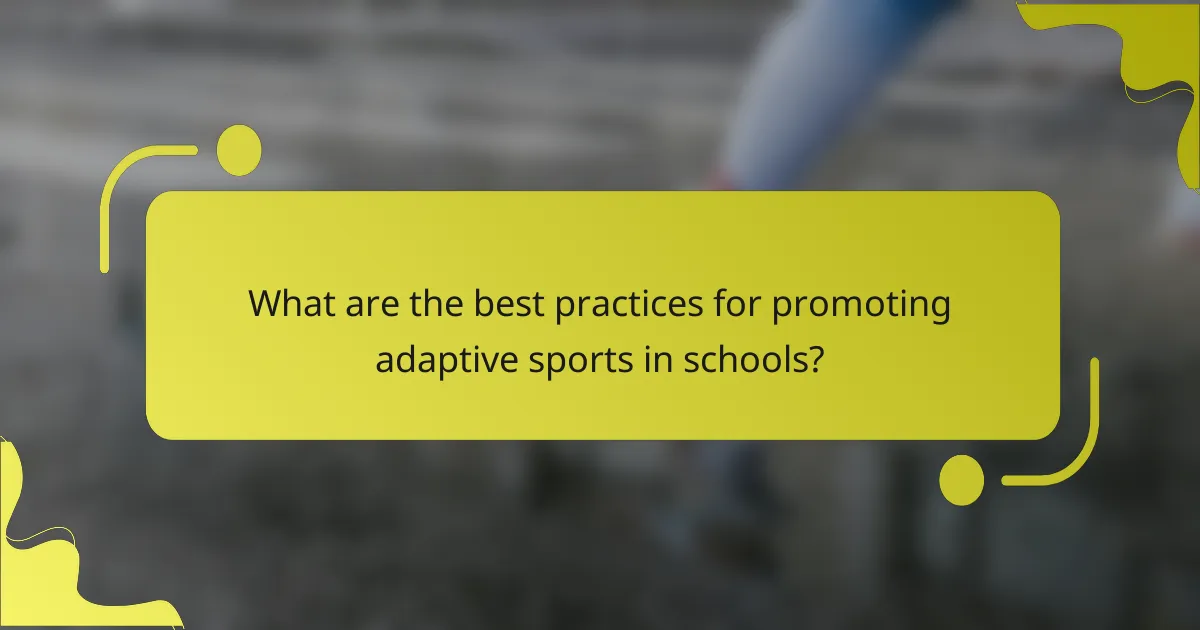
What are the best practices for promoting adaptive sports in schools?
Promoting adaptive sports in schools involves creating inclusive environments and community engagement. Key practices include training staff, integrating adaptive sports into existing programs, and fostering partnerships with local organizations.
1. Train educators on adaptive sports principles to enhance understanding and support for students with disabilities.
2. Include adaptive sports in physical education curricula to ensure all students participate.
3. Organize events that showcase adaptive sports, encouraging participation from the entire school community.
4. Collaborate with local adaptive sports organizations for resources and expertise.
5. Promote awareness campaigns highlighting the benefits of adaptive sports for all students.
6. Evaluate and adapt programs based on student feedback and participation rates.
How can educators create inclusive environments for adaptive sports?
Educators can create inclusive environments for adaptive sports by fostering collaboration, promoting accessibility, and encouraging participation. They should engage students in decision-making to ensure diverse needs are met.
Training staff on adaptive techniques and the importance of inclusivity is essential. Providing resources, such as specialized equipment, enhances participation. Creating a supportive community through events can strengthen bonds among participants.
Regular feedback from athletes helps tailor programs effectively. Celebrating achievements, regardless of skill level, builds confidence and encourages ongoing involvement.
What strategies can schools implement to encourage participation?
Schools can implement various strategies to encourage participation in adaptive sports. First, they can create awareness through workshops that highlight the benefits of inclusivity. Second, they can establish partnerships with local organizations to provide resources and support. Third, schools should train staff on adaptive coaching techniques to ensure effective engagement. Finally, offering incentives, such as recognition programs, can motivate students to participate actively.
What common mistakes should be avoided when organizing adaptive sports programs?
To avoid common mistakes when organizing adaptive sports programs, focus on inclusivity, accessibility, and proper planning.
First, neglecting to assess the needs of participants can lead to a lack of engagement. Conduct thorough surveys to understand their preferences and abilities. Second, failing to provide adequate resources, such as trained coaches and accessible facilities, undermines the program’s effectiveness. Ensure that all necessary equipment is available and in good condition. Third, overlooking the importance of community involvement can limit support. Actively involve local organizations and volunteers to foster a sense of belonging. Lastly, not promoting the program effectively can result in low participation. Utilize social media and local events to raise awareness and attract participants.
